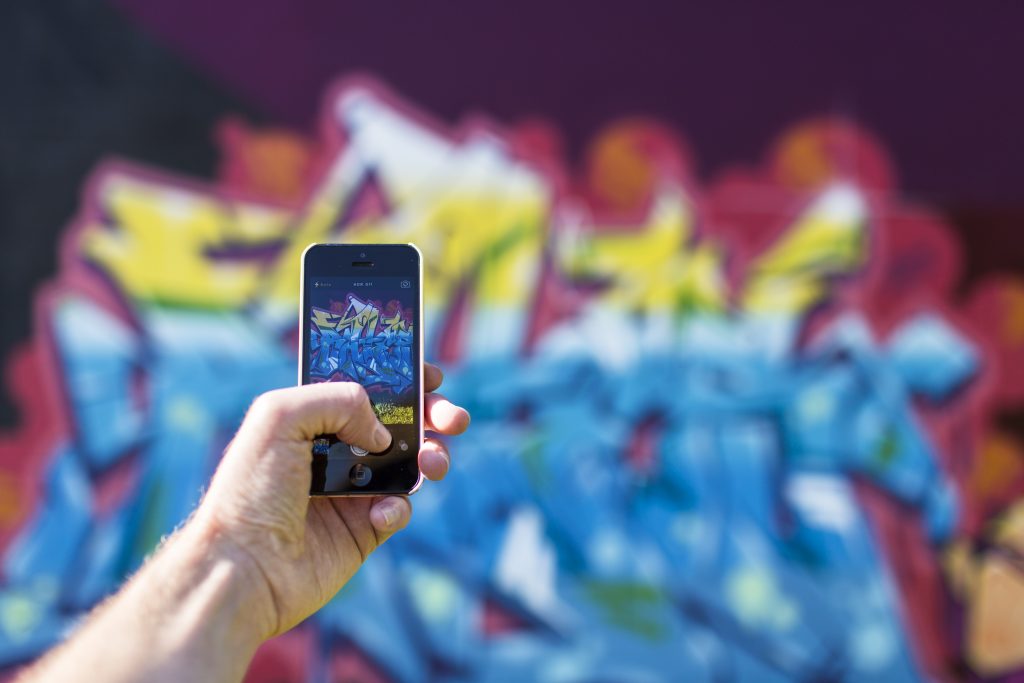
Should you consider adding AR to your next digital signage project?
Digital signage expo is coming up next week and this got me thinking about “the next big thing”.
It just seems like there’s always some new technology poised to revolutionize the industry. Take 3D for example. It was supposed to be everywhere. There were many booths on the DSE floor showing some type of 3D display. But 3D never really took off. It’s still being promoted by a few hardware manufacturers but it’s nowhere near what we expected based on the hype.
It wasn’t just a digital signage thing, because consumer 3D flopped too. There are many reasons to explain why 3D failed to take off. Costs, complexity, lack of good content… the list goes on!
But for every loser, there is a winner and I feel quite positive about this year’s “next big thing”. I’m talking about augmented reality (AR) and what it can bring to folks who install digital signage screens in their stores, hotels and restaurants.
Those who don’t recognize the term “augmented reality” should remember the Pokemon Go mobile game that became the benchmark for the technology. Back in 2016, Pokemon Go showed how immersive (and addictive) AR could be. It was a massive global success and soon other developers followed with their own AR games. While no other AR based game ever matched Pokemon Go, the technology had made its mark.
It’s been a couple of years since Pokemon Go and while the buzz has died down, AR seems poised to make a comeback and this time it’s not just about games.
Case in point, Microsoft is on it’s second generation of HoloLens technology and there are others in this space, like Google and Magic Leap who are developing advanced AR tools aimed at the industrial sector. HoloLens, Google Glass and other similar products require some type of headset or special goggles to project computer graphics within the wearer’s field of vision. While there are some potential consumer applications on the horizon, the current state of this technology is mostly aimed at the manufacturing, medical and scientific fields.
Now, you may ask… “What does this all have to do with digital signage?”
Pokemon Go showed us how AR can be an incredible tool to attract and engage an audience, and when combined with digital signage, AR apps can do much more. Software developers can write an app that lets smartphones detect visual cues on a digital signage screen to deliver personalized content. AR apps can detect a logo, a person’s face or any other shape. Once the app is installed, the audience can trigger a coupon download, an animation or any other type of content just by pointing their phone towards a screen.
It’s important to note AR interactions can also be based on a physical location, like GPS coordinates so you’re not limited to scanning for graphics. The point is, AR can add value to any digital signage network regardless of the venue and it works with any CMS software.
Retailers already talk of “gamification”, where techniques borrowed from the gaming world are used to engage customers. This is becoming very popular as retailers try to pull more traffic into their bricks-and-mortar stores. AR enables these types of interactions through a smartphone app.
For example, a car dealership can deliver product information like videos, brochures or other relevant content when someone points a smartphone at one of their cars. The same technique can be used in a retail store selling appliances or other big ticket items.
But it’s not just for retail. You can deliver digital coupons that get triggered when a logo or other graphic appears on the LED scoreboard at a sporting event. You can create “easter egg hunts” that require participants to reach a series of physical locations inside a stadium to unlock unique digital content, or access some giveaways. And these are just a few possibilities.
AR can enhance the impact of your digital signage content. It engages viewers by creating memorable experiences where static content becomes interactive.
Deploying an AR solution used to be expensive, complicated and time consuming, but recent breakthroughs are making AR much more accessible. This is where the software-as-a-service model comes into play. Rather than having to write your own AR apps from scratch, the service based model is making the technology more affordable and easier to deploy. It can also deliver valuable statistics and provide insights into consumer behavior.
Smartphones aren’t going away anytime soon, so I expect AR will be around for a long time. I also see this technology grow in popularity as we look to engage audiences in a more meaningful way.
